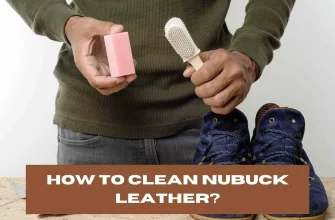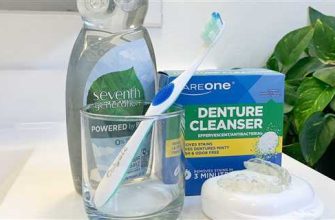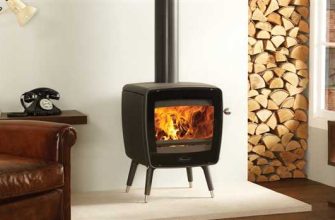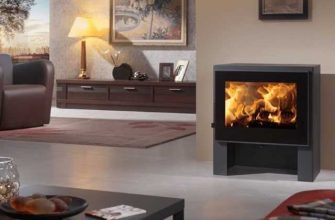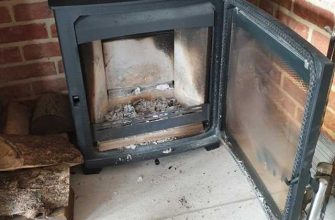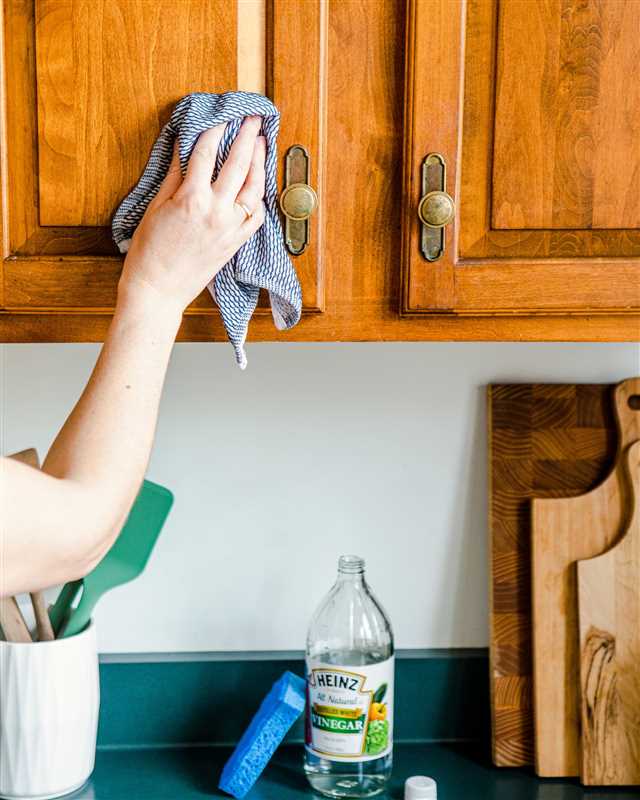
The kitchen cabinets in our homes often bear the brunt of everyday cooking activities, accumulating dirt and grease stains over time. Cleaning them requires more than just a quick wipe with a soapy sponge. If you’re wondering what techniques work best to eliminate tough grease stains and bring back the clean and serene look to your cabinets, you’ve come to the right place.
Dealing with tough grease stains on kitchen cabinets can be a challenging task. They aren’t easily removed with just any cleaning product, and it’s important to know exactly how to tackle the problem. Before you get lost in the multitude of cleaning products available on the market, it’s worth considering some tried-and-tested techniques that are both effective and environmentally friendly.
One big-ticket item worth coveting is a matt, dirt-affected base. This shade of paint marks the smoothness of your kitchen cabinets, which becomes completely lost once it’s stained with grease. So, how should you go about cleaning them? The first and most practical alternative is to use a soapy solution. This can be just as effective in removing tough stains as any high-end cleaning product, and it won’t break the bank.
When deciding on the best technique to clean your kitchen cabinets, it’s important to weigh all your choices wisely. Having a matt finish is usually the most popular choice, as it doesn’t show every single mark or dirt spot. However, if you’re someone who craves a more glossy and shiny look, then a painted finish could be the way to go. Regardless of your preferences, keeping your cabinets clean is of utmost importance.
Therefore, here are some effective techniques to remove tough grease stains and bring back the clean and pristine look to your kitchen cabinets. First and foremost, start by carefully wiping the surface with warm soapy water. The soap will help to break down the grease, making it easier to remove. For stubborn stains, you may need to use a specialized cleaning agent, but proceed with caution as these can be harsh on your cabinets.
Once the grease stains have been removed, give your cabinets a final wipe with a clean, damp cloth to ensure that no residue is left behind. Allow the cabinets to dry completely before reorganizing your kitchen utensils. Remember, a clean and well-maintained kitchen not only looks good, but it also promotes a healthy and inviting environment for you and your family.
In conclusion, when it comes to cleaning tough grease stains, it’s important to choose the right technique and products for the job. From soapy solutions to specialized cleaning agents, there are plenty of options to choose from. However, it’s always smart to start with the simplest and most environmentally friendly methods before moving on to more heavy-duty solutions. By taking the time to clean and maintain your kitchen cabinets, you’ll not only prolong their lifespan but also ensure a fresh and inviting look in your home for years to come.
- Importance of Regularly Cleaning Kitchen Cabinets
- 1. Preserve the Quality of Your Cabinets
- 2. Create a Clean and Inviting Atmosphere
- 3. Avoid Costly Repairs or Replacements
- 4. Make Cleaning Easier in the Future
- 5. Maintain the Appearance of Your Kitchen
- In Conclusion
- Prevent Dirt and Grease Build-up
- Use Protective Measures
- Proper Ventilation
- Regular Inspections
- Choose the Right Materials
- Bonus Tips
- Maintain the Aesthetic Appeal
- Regular Cleaning
- Removing Tough Stains
- Using Natural Remedies
- Proper Maintenance
- Preserving the Wood Finish
- Prevent the Growth of Bacteria and Mold
- 1. Regular Cleaning
- 2. Avoid Abrasive Cleaners
- 3. Choose the Right Cleaning Solution
- 4. Use Warm Water
- 5. Dry Thoroughly
- 6. Consider Natural Alternatives
- 7. Avoid Harsh Chemicals
- 8. Keep a Proper Ventilation
- 9. Address Spills and Stains Immediately
- 10. Regularly Check for Damage
- Effective Techniques to Remove Tough Grease Stains
- 1. Scouring Pads and Grease Removing Products
- 2. Hot Water and Soap
- 3. Baking Soda and Vinegar
- 4. Grease-Cutting Dishwashing Liquid
- 5. Use Proper Cleaning Techniques for Different Cabinet Materials
- Conclusion
- Using Vinegar and Baking Soda
- Step 1: Prepare the Cleaning Solution
- Step 2: Use Vinegar and Baking Soda
- Using Dish Soap and Hot Water
- Video:
- Getting grease off your walls
Importance of Regularly Cleaning Kitchen Cabinets
When it comes to maintaining a clean and organized kitchen, keeping your cabinets free of grease and grime is crucial. Regularly cleaning your kitchen cabinets not only helps to keep your cooking and eating space hygienic, but it can also extend the lifespan of your cabinets and maintain their attractive appearance. In this article, we will discuss the importance of regularly cleaning kitchen cabinets and provide effective techniques to remove tough grease stains.
1. Preserve the Quality of Your Cabinets
If you want your kitchen cabinets to last for years to come, regular cleaning is a must. Grease and dirt buildup can damage the finish of your cabinets, leading to discoloration and deterioration over time. By cleaning your cabinets frequently, you can prevent these issues and maintain their original quality.
2. Create a Clean and Inviting Atmosphere
A clean kitchen is not only visually appealing, but it also creates a welcoming and comfortable environment for cooking and dining. When your cabinets are free of grease and stains, it enhances the overall cleanliness and ambiance of your kitchen. Visitors and family members will feel more at ease in a clean and organized space.
3. Avoid Costly Repairs or Replacements
Regularly cleaning your kitchen cabinets can save you money in the long run. If grease and grime penetrate the surface of your cabinets, it can be challenging to remove them completely. In some cases, you may need to seek professional help or even consider replacing the cabinets altogether, which can be a big-ticket expense. By maintaining good cleaning habits, you can avoid these costly repairs or replacements.
4. Make Cleaning Easier in the Future
The more frequently you clean your kitchen cabinets, the easier the process becomes over time. When you clean your cabinets regularly, you prevent stubborn grease buildup from forming, making it easier to wipe away any dirt or stains that may accumulate. This saves you time and effort in the long run.
5. Maintain the Appearance of Your Kitchen
Kitchen cabinets play a significant role in the overall design and character of your kitchen. When they’re clean and well-maintained, they create a polished and inviting space. On the other hand, dirty cabinets can bring down the overall aesthetic appeal of your kitchen. Regular cleaning helps keep your kitchen looking fresh and well-cared for.
In Conclusion
Regularly cleaning your kitchen cabinets is essential for preserving their quality, creating a clean and inviting atmosphere, avoiding costly repairs or replacements, making future cleaning easier, and maintaining the appearance of your kitchen. By paying attention to the cleanliness of your cabinets, you can ensure that your kitchen remains a warm and serene space where you can enjoy cooking and spending time with loved ones.
Prevent Dirt and Grease Build-up
To keep your kitchen cabinets looking clean and grease-free, it’s important to prevent dirt and grease build-up. By following a few simple steps, you can ensure that your cabinets stay in great condition for a long time.
Cleaning your kitchen cabinets regularly is essential to prevent the build-up of dirt and grease. It’s a good idea to clean them at least once a week, or more often if needed. Use a soft cloth or sponge and a mild detergent to gently wipe down the surfaces. Pay special attention to areas where grease is more likely to accumulate, such as near the stove or under the sink.
Use Protective Measures
Using protective measures can also help prevent dirt and grease build-up. Place liners on the cabinet shelves and in the drawers to catch any spills or stains. These liners are easy to clean and can be replaced when necessary, keeping the interior of your cabinets looking fresh. Additionally, consider installing cabinet door protectors to prevent scratches and dings.
Proper Ventilation
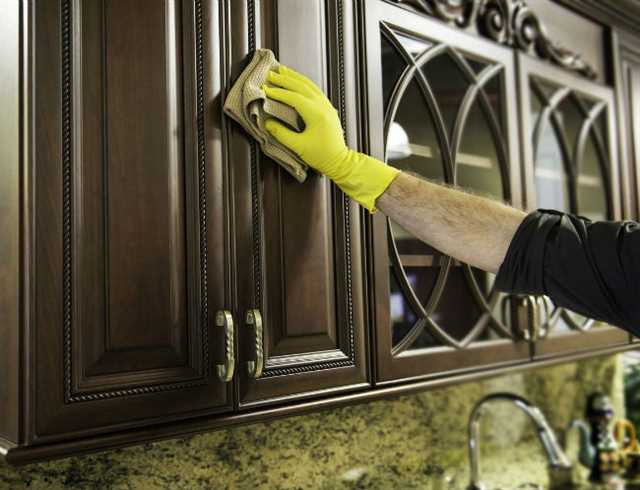
A well-ventilated kitchen can also help prevent dirt and grease build-up. Install a range hood above your stove to capture excess grease and steam. Make sure the hood is clean and functioning properly to prevent any accumulation of grease on your cabinets. Open windows or use fans to circulate fresh air and prevent a buildup of moisture in the kitchen.
Regular Inspections

Regularly inspect your kitchen cabinets for any signs of dirt or grease build-up. Catching and addressing these issues early on can prevent larger problems down the road. Look for any areas that may need extra attention, such as corners or crevices. Wipe down these areas thoroughly to ensure a comprehensive cleaning.
Choose the Right Materials
When choosing materials for your kitchen cabinets, consider their ease of cleaning and resistance to grease. Opt for finishes in a light color or gloss, as they are easier to clean and can hide any small stains or marks. Avoid matte or darker colored cabinets, as these can show grease and dirt more easily. Additionally, look for cabinet designs that have fewer seams and joints, as these can be more difficult to clean.
Bonus Tips
- When cleaning your kitchen cabinets, start from the top and work your way down to prevent any dirt or grime from falling onto already cleaned surfaces.
- For stubborn grease stains, mix equal parts water and vinegar to create a natural cleaning solution. Apply this solution to the stain with a soft cloth and gently scrub until the stain lifts.
- Consider organizing your kitchen cabinets in a way that makes it easier to clean. Group similar items together and use dividers or bins to keep everything organized and accessible.
- Remember to clean the handles and knobs of your cabinets regularly, as these can also accumulate dirt and grease.
By following these practical tips and tricks, you can definitely keep your kitchen cabinets clean and grease-free. Regular cleaning and preventive measures are key to maintaining the appearance and longevity of your cabinets.
Maintain the Aesthetic Appeal
Maintaining the aesthetic appeal of your kitchen cabinets is important to keep your kitchen looking clean and inviting. With regular cleaning and proper maintenance, you can ensure that your cabinets always look their best. Here are some effective techniques to help you maintain the aesthetic appeal of your kitchen cabinets.
Regular Cleaning
Regular cleaning is key to keeping your kitchen cabinets looking great. By making a habit of cleaning them, you can prevent tough grease stains from accumulating and becoming difficult to remove. Use a mixture of warm water and mild dish soap to gently clean the surfaces of your cabinets. Remember to avoid using abrasive cleaners or scouring pads, as they can damage the wood finish.
Removing Tough Stains
If you have stubborn grease stains on your kitchen cabinets, there are a few tricks you can try to remove them. One common method is to use a mixture of baking soda and water. Apply the paste to the stained areas and let it sit for a few minutes. Then, gently scrub the stain with a soft cloth or sponge. This should help to draw out the grease and remove the stain without damaging the wood.
Using Natural Remedies
Natural remedies can also be effective in removing tough grease stains from kitchen cabinets. For example, you can try using lemon juice, vinegar, or even toothpaste to clean the stains. These natural ingredients are environmentally friendly and safe to use on wood surfaces. Just remember to test a small, inconspicuous area first to ensure that they won’t cause any damage or discoloration.
Proper Maintenance
In addition to regular cleaning, proper maintenance is important to keep your kitchen cabinets looking their best. This includes avoiding excessive moisture or direct contact with water, as it can cause the wood to warp or swell. It’s also a good idea to use coasters or placemats to protect the cabinet surfaces from hot dishes or spilled liquids.
Correctly organizing your kitchen cabinets can also help to maintain their aesthetic appeal. Keep regularly used items within easy reach and neatly arrange everything else. This will make it easier to find what you need, while also preventing clutter and disorganization that can detract from the overall look of your cabinets.
Preserving the Wood Finish
If your kitchen cabinets have a natural wood finish, it’s important to take special care to preserve their beauty. Avoid using harsh chemical cleaners, as they can strip away the natural oils and cause the wood to dry out. Instead, opt for gentle cleaning solutions and natural wood cleaners that are designed specifically for this purpose. Regularly applying wood polish or oil can also help to nourish the wood and protect its natural color and shine.
By following these tips and techniques, you can maintain the aesthetic appeal of your kitchen cabinets for years to come. Remember to clean them regularly, remove tough stains carefully, use natural remedies when possible, and practice proper maintenance to ensure that they always look their best.
Prevent the Growth of Bacteria and Mold
When it comes to cleaning kitchen cabinets, it’s important not only to remove tough grease stains but also to prevent the growth of bacteria and mold. Here are some effective techniques to keep your cabinets clean and hygienic:
1. Regular Cleaning
The first and most important step in preventing the growth of bacteria and mold is to clean your kitchen cabinets regularly. Make it a habit to wipe down your cabinets at least once a week with a mild soapy solution.
2. Avoid Abrasive Cleaners
Avoid using abrasive cleaners or scouring pads on your cabinets, as they can damage the finish and make them more prone to bacteria and mold growth. Instead, opt for gentle and non-abrasive cleaning methods.
3. Choose the Right Cleaning Solution
When dealing with tough grease stains, choose a cleaning solution that is specifically designed for kitchen cabinets. There are many commercial cleaning products available that are suitable for different types of cabinet materials.
4. Use Warm Water
Warm water is usually sufficient for most cleaning tasks. Mix a small quantity of mild dish soap with warm water and use a soft cloth or sponge to wipe down your cabinets. Make sure to wring out the cloth or sponge well to avoid leaving excess water on the cabinets.
5. Dry Thoroughly
After cleaning your cabinets, make sure to dry them thoroughly to prevent any moisture from lingering. Moisture can lead to the growth of bacteria and mold. Use a clean and dry cloth to wipe down the cabinets after cleaning.
6. Consider Natural Alternatives
If you prefer to use natural cleaning solutions, vinegar and water can be an effective alternative. Mix equal parts of white vinegar and water and use this solution to clean your cabinets. Vinegar has natural antibacterial properties and can help prevent the growth of mold.
7. Avoid Harsh Chemicals
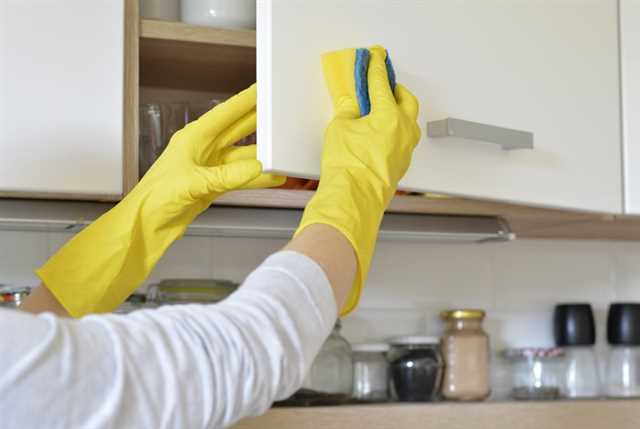
Avoid using harsh chemicals or bleach on your cabinets, as they can damage the finish and may not be safe for food contact surfaces. Stick to mild and gentle cleaning solutions to maintain the integrity and appearance of your cabinets.
8. Keep a Proper Ventilation
Proper ventilation in your kitchen is essential to prevent the growth of bacteria and mold. Make sure your kitchen has good airflow and use exhaust fans while cooking to minimize moisture and odors.
9. Address Spills and Stains Immediately
If you spill anything on your cabinets, address it immediately. Wipe up spills and stains as soon as they happen to prevent the growth of bacteria and mold. Prompt action can save you from tough cleaning tasks in the long run.
10. Regularly Check for Damage
Regularly check your cabinets for any signs of damage or wear. Replace any worn-out or damaged parts to avoid further problems. Taking proactive measures can help maintain the cleanliness and longevity of your kitchen cabinets.
By following these preventive measures, you can keep your kitchen cabinets looking beautiful and free from bacteria and mold. Regular cleaning and proper maintenance will not only ensure the hygiene of your kitchen but also extend the lifespan of your cabinets.
Effective Techniques to Remove Tough Grease Stains
Grease stains can be a nightmare to remove from surfaces, especially in the kitchen where they are more likely to occur. Luckily, there are realistic and effective techniques you can use to remove those tough grease stains that seem to resist all your efforts.
1. Scouring Pads and Grease Removing Products
One of the most common and effective methods to remove tough grease stains is to use scouring pads or grease removing products. These products are specifically designed to break down and remove grease from surfaces. They can be used on various materials, including kitchen cabinets, to eliminate even the most stubborn grease stains.
2. Hot Water and Soap
If you prefer a more natural approach, hot water and soap can also do wonders in removing grease stains. Simply mix hot water with a few drops of dish soap and use a sponge or cloth to scrub the affected area. This method works best for grease stains that are not too stuck on the surface.
3. Baking Soda and Vinegar
Another effective and natural method is to use a mixture of baking soda and vinegar. Create a paste by mixing the two ingredients together and apply it to the grease-stained area. Let it sit for a few minutes before scrubbing with a sponge or cloth. The combination of baking soda and vinegar provides a powerful cleaning solution for tough grease stains.
4. Grease-Cutting Dishwashing Liquid
If you’re looking for a quick solution, using a grease-cutting dishwashing liquid can be a game-changer. These dishwashing liquids are specifically designed to cut through grease and make cleaning easier. Simply apply the dishwashing liquid to the grease stain and scrub with a sponge or cloth. Rinse thoroughly with water afterward.
5. Use Proper Cleaning Techniques for Different Cabinet Materials
When dealing with grease stains on kitchen cabinets, it’s essential to use the correct cleaning techniques based on the material of your cabinets. For glossy cabinets, it’s best to avoid abrasive cleaners and opt for gentle solutions like dish soap and water. Wood cabinets, on the other hand, may benefit from a slightly stronger solution, such as a mixture of vinegar and water. Always test any cleaning solution on a small, inconspicuous area before applying it to the entire cabinet.
Conclusion
Removing tough grease stains requires a combination of realistic techniques and the right cleaning products. Whether you choose to use scouring pads, hot water and soap, baking soda and vinegar, grease-cutting dishwashing liquid, or specialized cleaning products, it’s important to approach the cleaning process with care. By using the correct cleaning techniques for your specific cabinet material, you can effectively remove those tough grease stains and keep your kitchen cabinets looking brand new.
Using Vinegar and Baking Soda
If you are looking for an overall effective and eco-friendly method to remove tough grease stains and clean your kitchen cabinets, then using vinegar and baking soda is a great option. Vinegar is known for its acidic properties, making it a powerful cleaning agent, while baking soda is a gentle abrasive that helps remove stubborn stains without scratching the surface.
To start, you’ll need to gather a few supplies:
- A small bowl
- A clean cloth
- Dish soap
- White vinegar
- Baking soda
- Warm water
Step 1: Prepare the Cleaning Solution
- In a small bowl, mix equal parts white vinegar and warm water. For example, you can use 1 cup of vinegar and 1 cup of warm water.
- If there are any tough grease stains on the cabinets, apply a small amount of dish soap to the stained area and gently scrub with a cloth.
- Rinse the soap off with water and pat dry with a clean cloth.
Step 2: Use Vinegar and Baking Soda
- Sprinkle a small amount of baking soda on a damp cloth or sponge.
- Gently scrub the cabinets using circular motions. The baking soda will help to loosen and lift any stubborn grease stains.
- Once you have scrubbed the cabinets, dip your cloth or sponge in the vinegar and water mixture.
- Wring out the excess liquid and gently wipe down the cabinets, removing any remaining grease or baking soda residue.
- Finally, rinse the cloth or sponge with clean water and wipe down the cabinets once more to remove any traces of vinegar or baking soda.
These steps can be repeated as necessary, depending on the severity of the stains. For particularly tough grease stains, you may need to let the vinegar and baking soda mixture sit on the stains for a few minutes before scrubbing.
It’s important to note that vinegar can be too harsh for certain cabinet finishes, such as high-gloss or oil-based finishes. Always test the vinegar and baking soda solution on a small, inconspicuous area of your cabinets before using it on the whole surface. If you notice any damage or discoloration, stop using the solution immediately.
Overall, using vinegar and baking soda is a cost-effective and environmentally friendly way to clean tough grease stains from your kitchen cabinets. With just a few basic supplies and some elbow grease, you can restore the beauty and shine to your cabinets.
Using Dish Soap and Hot Water
One effective technique for removing tough grease stains and cleaning kitchen cabinets is by using dish soap and hot water. This method is ideal for larger, more dramatic grease stains that have taken over your cabinet spaces. Dish soap is a powerful degreaser, and when combined with hot water, it can dissolve and remove even the toughest grease build-up.
To start, gather everything you need for this cleaning task: dish soap, hot water, a soft cloth or sponge, and a clean towel for drying. Fill a large sink or basin with hot water and add a few squirts of dish soap. The hot water helps to loosen the grease, while the soap breaks it down for easier removal.
Next, dip your cloth or sponge into the soapy water and wring out any excess. Gently scrub the greasy areas of your kitchen cabinets, paying special attention to the dirt-affected spots. You can use a gentle back-and-forth motion or small circular motions to work the soap into the grease.
If you have any glass panels on your cabinets, be sure to clean them with a vinegar and water solution instead of dish soap. Glass tends to streak if cleaned with soap, but the vinegar solution leaves a streak-free finish.
Let the soap and hot water sit on the cabinets for a few minutes to allow the grease to break down further. For particularly stubborn stains, you can spray them with a high-quality grease-fighting cleaner, let it sit for a few minutes, and then wipe it off with a cloth or sponge.
After the soap and hot water have had time to work their magic, use a clean cloth or sponge to wipe away any remaining grease and soap residue. Rinse out your cloth or sponge frequently to ensure you’re not just spreading the grease around.
Finally, dry your cabinets thoroughly with a clean towel to prevent water spots or streaks. If you have wood cabinets, be sure to dry them quickly and thoroughly to avoid any potential water damage.
In a nutshell, using dish soap and hot water is an effective and easy way to remove tough grease stains and clean your kitchen cabinets. Just remember to be careful with the cleaning process, and always follow the manufacturer’s instructions and recommendations for your specific cabinet material and finish.

